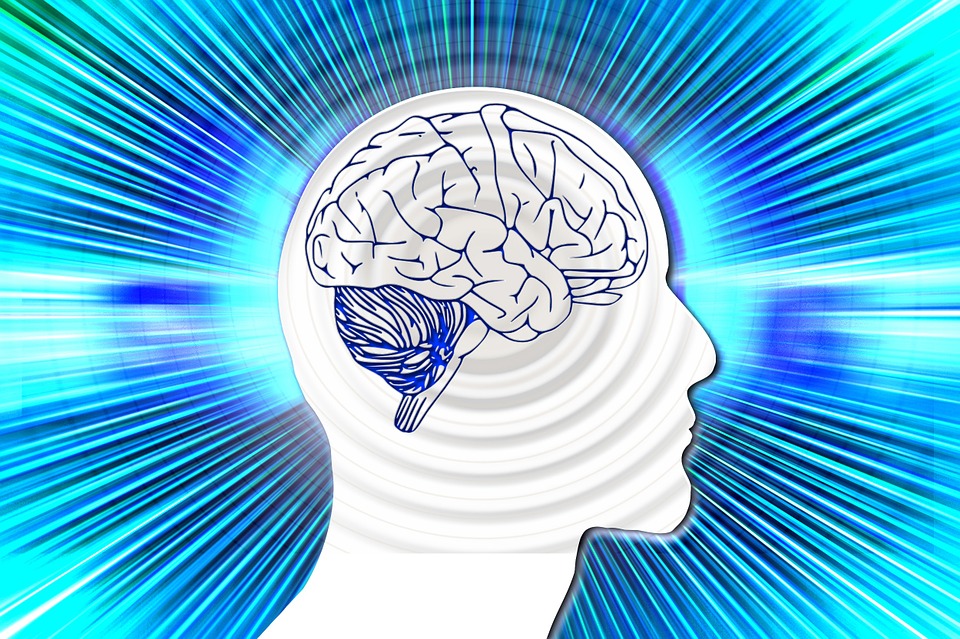Ebbinghaus discovered that students forget up to 90 percent of what they learn within a 30-day period. The author argues that implementing the Head-to-Toe Method of Associations for Vocabulary Acquisition is a solution to this age-old problem.
Introduction: The Core Problems and One Innovative Solution
From the start, our English language learners (ELLs) are up against the undeniably daunting task of learning a sufficient amount of vocabulary (i.e., single-word lexical items, phrases, and idioms) to be successful in their English-using host culture colleges and universities. Seashore and Eckerson (1940) claimed that native English-using undergraduates have close to 156,000 vocabulary items in their personal lexicon. Lorge and Chall (1963), however, argued that the actual number is more like 39,000. Recent research conducted by Goulden, Nation, and Read (1990) concluded that native English-using university or college graduates know close to 20,000 lexical items. This list, however, does not include phrases and idioms.
Perhaps the most inspiring study is the one done by Francis and Kucera (1982); they claim that ELLs can attain a solid understanding of written work if they know at least 5,000 English words. The next task, then, is to identify and categorize what these magical 5,000 words are (McCarten, 2007). This, in itself, is an almost impossible endeavor given that different students demand different lexical items. What each student needs depends on their level of study and what their field of study is. Suffice it to say, our students need to study vocabulary, and we need an effective and efficient method to help them learn.
To make matters worse, there is something I call the Ebbinghaus curse. In 1885, Hermann Ebbinghaus made a significant and, at the same time, discouraging discovery: We forget approximately 90 percent of what we learn within a 30-day period. To add insult to injury, he also discovered that the majority of this forgetting happens during the first few hours after the initial encoding and learning of the material take place (Ebbinghaus, 1885/1913).
So, given that our students need such a large number of lexical items to successfully survive at the college level, and given they will, according to Ebbinghaus, forget up to 90 percent of these once exposed to them, is there really any purpose in teaching vocabulary? Younger instructors in the profession are also dismayed when they read Krashen (2012), who claims that “direct instruction cannot deal with the size and complexity of vocabulary learning” (p. 33). In addition, vocabulary pedagogists, like Paul Nation, have given interviews claiming that it is a waste of time to teach vocabulary.
Krashen and Nation do have a point, for students need a vast amount of vocabulary, and, if the students will forget 90 percent of these terms, then perhaps there really is no need to teach vocabulary. I, however, politely disagree based on the development of my own vocabulary teaching method I call the Head-to-Toe Method of Associations for Vocabulary Acquisition. I argue that, although instructors cannot teach the needed 5,000 lexical items in a semester, by using the Head-to-Toe Method, they can (1) break the daunting Ebbinghaus curse (McPherron & Randolph, 2014), and (2) help students develop a surefire method that they will be able to use on their own to help acquire the needed vocabulary.
A Definition of the Head-to-Toe Method of Associations for Vocabulary Acquisition
The Head-to-Toe Method of Associations is a flexible and creative method based on establishing as many neural pathway connections as possible during the encoding process to facilitate and strengthen the language learners’ long-term retention of English lexical items. These connections are also reinforced through a number of neuroscience- and humanistic-based associations that are elicited during the storage and retrieval processes. Repetition of these associations and the terms’ meanings and usages also play a central role in the method.
The pivotal reason why I think this method has been so successful and why my students and others (G. Almeida-Alves, personal communication, January 20, 2016; C. Hart, personal communication, May 17, 2014) feel it works, rests on the fact that the method is focused primarily on eliciting connections based on the students’ personal histories, and it pulls from their emotional associations and memories. This helps transform abstract lexical items into more concrete and personal ones. So, the students feel an immediate ownership and relation to the terms that are studied. In fact, one could figuratively claim that 90 percent of the method is student-generated and 10 percent is teacher-generated.
The Head-to-Toe Method’s relation to fhe Spider Web Effect
The Head-to-Toe Method contains up to 40 effective components (e.g., see Randolph, 2015, regarding the word-personality activities), although not all, of course, are used at one time. The various components are implemented at different times in the process. Some components, depending on the level, interest, and ability of the students, can be selected and others bypassed. The method is essentially a large toolbox—an instructor can pick and choose what he or she feels is necessary.
The Head-to-Toe Method can be likened to the structural dynamics of a spider web. The strength of a spider web, according to MIT’s David L. Chandler (2012), is the unique characteristics of “the material’s unusual combination of strength and stretchiness—silk’s characteristic way of first softening and then stiffening…” (para. 1). There is also the complex design that reinforces the web and supports it—even against devastating, hurricane-like winds. The design keeps it intact and ready to capture the spider’s prey (Chandler, 2012).
The Head-to-Toe Method is much like the spider web because of the vast number of student-elicited connections that form an intense “neural webbing of connected associations” (Randolph, 2015a, para. 4). Each personal association made during the all-important moment of encoding (Medina, 2009) helps forge an active connection between a set of neurons, thus fostering a deep understanding of the vocabulary item and helping to transfer it to the students’ long-term memory. The more connections and associations that develop, the stronger the memory becomes as it holds the vocabulary term in its “silky” webbing.
A Brief Survey of the Primary Tools
The Ebbinghaus curse is an undeniable reality (Ebbinghaus, 1885/1913; Medina, 2009; Sousa, 2011), but this does not mean it always happens or has to happen. The Head-to-Toe Method has consistently broken the curse through the use of its key components. When I evaluate my ELLs with pop quizzes/tests—weeks and sometimes months after first teaching the terms—my classes average an 88 percent to 98 percent retention rate of the vocabulary terms. These quizzes require students to define the terms correctly and use them in original example sentences (Randolph, 2015b).
As above, I mentioned the method consists of 40 components, but neither time nor space allow me to detail all of these; I will, however, briefly explain the main components or tools and then go over the procedure I use during a week of lessons.
I would like to note that I do not teach a class solely devoted to vocabulary. The courses I teach are focused on academic presentations, critical reading, or academic writing. In each of these classes, I designate the first 15-20 minutes to vocabulary. I mention this because I feel it’s important for other instructors to realize they do not need a whole class to effectively teach vocabulary; but rather, they can use their warm-up time to help students acquire both the terms and the tools for steering them in the direction of self-learning. The following tools are the essential parts of the framework I use to teach vocabulary.
Physical exercise
According to prominent educators (Jensen, 2008; Sousa, 2011; Willis, 2006) and neuroscientists (Biswas et al., 2015; Medina, 2009; Ratey, 2010), physical exercise is the essential ingredient that makes all learning possible; it provides oxygen to the brain, elicits multiple learning-based neurotransmitters like epinephrine and acetylcholine, releases proteins in the brain like brain derived neurotrophic factor (BDNF), strengthens existing neural-connections, and helps create new neurons (neurogenesis) for more learning (Ratey, 2010). A series of studies done in Germany (Schmidt-Kassow et al., 2013; Winter et al., 2007) showed how exercise before and during the encoding of vocabulary increases the chances of long-term retention of the lexical items.
Repetition and spaced-out intervals of review
Ebbinghaus (1885/1913) discovered that although we can and often do forget up to 90 percent of what we learn within 30 days, this does not have to be the case. He explained that if we repeat and review the newly acquired information and re-expose ourselves to it at spaced-out intervals during the hour, day, or week, we can break the curse. Medina (2009) supports this claim. “Memory’, he states, ‘may not be fixed at the moment of learning, but repetition, doled out in specifically timed intervals, is the fixative” (p. 130).
Verbpathy and emotion
Verbpathy (verb=word; pathy= feeling) is a concept I created and use to describe how students begin to intuitively “feel” the deeper meanings, registers, and usages of words. It also introduces them to the emotional value of words. Neuroscientists such as Damasio (2000) and Willis (2006) have discovered that emotions are central to learning, and anytime we can incorporate an emotional connection to learning, there is a greater chance we have of making the learning last through a webbing of intense neural activity in the amygdala and cerebral cortex.
Synesthesia and sensory integration
Synesthesia is a neural condition in which there is a crisscrossing of the senses so that they actually produce a different perception or experience from their normal function; e.g., synesthetes might “taste colors,” “hear colors,” “smell sounds,” or “taste shapes.” Cytowic and Eagleman (2011) have reported that one very positive attribute of synesthetes is their excellent long-term memory. Drawing from this, I incorporate the senses in my Head-to-Toe Method, for it helps the students create a multiple-neural connection experience with words and senses, and it helps weave together multiple personal associations with a single lexical item. It is a fact that “Our senses evolved to work together—vision influencing hearing, for example—which means that we learn best if we stimulate several senses at once” (Medina, 2009, p. 219).
Embodied semantics
The use of embodied semantics is a relatively new component of the Head-to-Toe Method. Here, I have students associate the lexical items with the body. For instance, “shed light on” could be associated with “the mouth,” “the brain,” or “the hands,” as these help us “explain” things clearly. According to neuroscientists, Aziz-Zadeh and Damasio (2008), the concept of embodied semantics rests on the framework that language concepts “are represented in the brain within the same sensory-motor circuitry in which the enactment of that concept relies” (p. 1). When someone says and hears “kick the ball,” the brain deploys the same motor neurons that are used when one actually kicks a ball. The idea is the body and brain work as one.
Teaching and explaining
For a review of the current week and previous weeks’ terms, I get the students to pair up and quiz or “reteach” each other about the terms. The idea is that I want them to command a teaching role and have authority over the terms. This also buys into the repetition and spaced-out interval technique. Moreover, I feel the more my students talk about the terms, explain them, and look at them from a teacher’s perspective, the more they will learn and remember them. Craik and Lockhart (1972) argued for a similar idea that looked at elaborate ways to process information with greater “depth or levels of processing” (p. 671). According to their work, “Only deeper processing will lead to an improvement in memory” (p. 681). They showed that the more elaborate ways one examines something, the deeper their learning becomes.
The Head-to-Toe Method: Entering the Spider Web, Strengthening Neural Connections
Before going over the Head-to-Toe Method’s procedure, I’d like to point out some important caveats. As I mentioned above, there are a vast number of components in this method. Not all, of course, are imperative for the encoding process nor are they necessary for one lesson. The two primary reasons I have so many tools are (1) different tools can be used at different stages of acquisition (i.e., the encoding, retrieval, and usage stages), and (2) the tools give each instructor an opportunity to try what best fits their own unique style, psyche, and comfort zone. In this sense, the method supports Kumaravadivelu’s postmethod approach to teaching (2006). In addition, it allows instructors to use the components that fit best for a particular group of students.
In the following section, I will focus on the “core components” I use for every lesson. These are considered “core components” primarily because of their proven effectiveness and because the students in my Intensive English Program and English language university credit classes have defined them as “essential” for their learning outcomes. I would also like to point out that the core components should not necessarily be used all at once when first trying the method. I recommend that instructors implement one and then, when they feel comfortable with expanding their repertoire, add the next component in the procedure (Randolph, 2014). Now, let us take a look at how the method unfolds.
I always start each lesson with a few minutes of physical exercise. Before doing these exercises, however, I always give students the option to either participate or decline. Since I’ve implemented and promoted class exercises before and during the lessons, I have had a 99 percent participation rate. Students not only quickly see the benefits, but they enjoy doing the exercises as well.
The point of these exercises is to elevate the heart rate and increase blood flow and oxygen to the brain. The exercises I use range from running in place, doing a timed hall walk, or tai-chi-like exercises. The third aforementioned activity can be seen in the video below.
Once the students are seated, I write a lexical item on the board without any definition. Next to the term, I write the key Head-to-Toe components, and under the term, I offer an example sentence:

The students are given a worksheet with the same information on it. Each vocabulary sheet consists of five terms. In addition to the written example on the board and on their worksheets, I give them two or three more spoken example sentences. The students are usually quick to infer the meaning and give me the definition. I may help them craft the standard definition of the term, but I never dictate it to them or give it outright. And, as this is a class activity, all the members become engaged in forming, learning, and confirming the correct definitions of the terms.
This Socratic approach helps in the encoding stage for a number of reasons: First, when they formulate the definitions themselves, there is the immediate feeling of personal involvement, contribution, and ownership. I am not telling them what the definition is, they are telling me. This, in itself, ignites that first needed electrical flash between neurons to start the encoding process. Second, the fact that the students and I are using the term multiple times in an isolated time frame (15-20 minutes) reinforces the key components of repetition and spaced-out intervals. Third, the emotions, interest, and attention are piqued because I use the students’ names, hobbies, and personal or cultural background histories in the example sentences. This use of student information elicits immediate emotional value and connections to the terms, and thus, employs the highly important amygdala—the brain’s center for emotional learning and emotional memory (Medina, 2009). In fact, a student recently commented that a major problem with many dictionary examples is that they have no or very little, at best, relation to the ELLs’ lives. She likes the Head-to-Toe Method because of the immediate, personal, and engaging examples on the worksheets and ones given by me and her classmates during the lesson.
Once the definition is addressed, we go over the part of speech (in the case of our example, “shed light on,” we could classify it as an idiom functioning as a verb group), and then we turn to the term’s verbpathy. Verbpathy entails that the students assign a positive, negative, or neutral “feeling” to the term and explain why they feel it is so. Verbpathy can include a general cultural feeling and a personal one. This often makes for lively debate and truly gets the ELLs to relate to the terms at a deeper level. “Shed light on,” of course, would elicit a positive feeling because it “clarifies” or “makes something clear.” At this point, when necessary, I also go over possible registers of the term—when, where, and with whom it can be used.
Next, I ask the students what color they would assign or associate with the terms. With respect to “shed light on,” common responses are “white,” “yellow,” or “orange”—colors that are linked to the ideas firing in the brain or the light of knowledge overpowering the dark hues of ignorance. Some students, however, will go beyond the general or commonly associated colors, and that is where this gets exciting. These insights penetrate their personal history and offer us a window into their inner person. Here, I might receive answers like “purple,” “blue,” or “green.” For instance, one student associated “green” with “shed light on” because of two reasons:
- “green,” he claimed, “shed light on” the fact that spring is coming, and
- “green” was the favorite color of his high school history teacher, who happened to explain everything very clearly.
The fact that the student personalized the term with his own life’s history set up multiple cultural, personal, and historical connections with the item in his brain’s neural-webbing.
After I elicit the colors from the students, I move on to the term’s emotional associations and ask what emotion or emotions the term evokes or represents. For example, “shed light on” often evokes the feelings of “happiness,” “interest,” “comfort,” and “surprise.” Students have also responded with associations such as “excitement,” “curiosity,” “confidence,” and “pride.” Each of these, they claimed, connects to the meaning of making something clear or being satisfied with a good explanation.
The last major association we cover is the body association. Here, I ask the students what body part they feel best represents the term in question. While recently studying “shed light on,” my students felt that the “brain,” “hands,” and “arms” symbolized the best correlations with the idiom. Their reasoning was based on the idea that we use these parts to clarify ideas on both conceptual and physical levels; the brain reasons out what is clear, and the arms and hands add to this with physical gestures that help create “picture-like” images that define the term.
After we wrap up the part of speech and the four essential associations, I ask the class to give original example sentences using the terms. Their examples are often unique, humorous, classmate-related, and personal, so they resonate with the whole class. This experience is what my student, mentioned above, recently voiced when she juxtaposed the common dictionary examples with the ones generated in our classes. This whole experience reinforces the sense of word ownership and creates an immediate personal relation to the words. The examples also allow the students to both say and hear the new terms multiple times, helping to strengthen an understanding of the items during the all-important encoding process. Here again the notion of the spaced-out intervals of repetition comes into play. The students will see, hear, and maybe even use terms up to 8-10 times within a mere 15-20-minute period. Add the time they study on their own in the evenings, and they will create a solid connection among their neurons.
Finally, the vocabulary items of the current week are additionally reviewed in two ways. First, the students complete the above mentioned worksheet that requires them to create original example sentences for each term; and second, the warm up for the last class of the week gives the students an opportunity to pair up and review the weekly terms’ definitions and create new example sentences. This is where they get to teach and explain or talk about the terms, implementing Craik and Lockhart’s elaborate or “deeper processing” (p. 681).
Concluding Remarks
Although the Ebbinghaus curse is a reality, it does not necessarily need to haunt all English language teachers; the curse can be broken. For five years, I have collected data showing an extremely high retention rate of the taught vocabulary. By using pop quizzes/tests (another key element of the method), I have helped my students score anywhere between 88 to 98 percent as a class. For example, a recent class took four pop quizzes/tests during the course of the semester. The class results (N=15) were 91.3, 93.2, 98, and 93.6 percent. The overall average of these was 94 percent.
Moreover, my former students have also reported that they have found the method useful to use for both their own studies and for their own students (for those who are teachers) when they return to teaching in their respective classrooms. I attribute the success of the method to the fact that I am engaging my students to make these terms a part of their lives through developing and fortifying unique connections and creative associations that penetrate the essence of who and what they are. The method allows students to see that their perceived self-worth and personal history are the keys to acquiring the lexical world they need to survive at the university and beyond.
References
Aziz-Zadeh, L., & Damasio, A. (2008). Embodied semantics for actions: Findings from functional brain imaging. Journal of Physiology, Paris, 102 (1-3), 35-39. 1-5. doi: 10.1016/ j.physparis.2008.03.012
Biswas, A., Oh, P.I., Faulkner, G.E., Bajaj, R.R., Silver, M.A., Mitchell, M.S., & Alter, D.A. (2015). Sedentary time and its association with risk for disease incidence, mortality, and hospitalization in adults: A systematic review and meta-analysis. Annals of Internal Medicine, 162(2), 123-132. doi: 10.7326/M14-1651
Chandler, D.L. (2012). How spider webs achieve their strength. MIT News. Retrieved from http://news.mit.edu/2012/spider-web-strength-0202
Craik, F.I.M., & Lockhart, R.S. (1972). Levels of processing: A framework for memory research. Journal of Verbal Learning and Verbal Behavior, 11, 671–684.
Damasio, A. (2000). The feeling of what happens: Body and emotion in the making of consciousness. Orlando, FL: Mariner Books.
Ebbinghaus, H. (1913). Memory: A contribution to experimental psychology (H.A. Ruger & C.E. Bussenius, Trans.). New York, NY: Teachers College. (Original work published 1885)
Francis, W.N., & Kucera, H. (1982). Frequency analysis of English usage. Boston, MA: Houghton Mifflin Company.
Goulden, R., Nation, P., & Read, J. (1990). How large can a receptive vocabulary be? Applied Linguistics, 11(4), 341-363.
Jensen, E. (2008). Brain-based learning: The new paradigm of teaching. Thousand Oaks, CA: Corwin Press.
Krashen, S. (2012). Reading and vocabulary acquisition: Supporting evidence and some objections. Iranian Journal of Language Teaching Research, 1(1), 27-43.
Kumaravadivelu, B. (2006). Understanding language teaching: From method to post-method. Mahwah, NJ: Lawrence Erlbaum.
Lorge, I., & Chall, J.S. (1963). Estimating the size of vocabularies of children and adults: An analysis of methodological issues. Journal of Experimental Education, 32, 147-157.
McCarten, J. (2007). Teaching vocabulary. New York; NY: Cambridge University Press.
McPherron, P., & Randolph, P.T. (2014). Cat got your tongue?: Recent research and classroom practices for teaching idioms to English learners around the world. Alexandria, VA: TESOL Press.
Medina, J. (2009). Brain rules: 12 principles for surviving and thriving at work, home, and school. Seattle, WA: Pear Press.
Randolph, P.T. (2014). Breaking the Ebbinghaus curse for vocabulary acquisition with the R.E.S.T. method. The Selected Proceedings of the 2013 MITESOL Conference, 66-75.
Randolph, P.T. (2015a). Getting physical: Making connections between the body and vocabulary. CATESOL News Quarterly (47) 3.
Randolph, P.T. (2015b). Breaking the Ebbinghaus curse: A guaranteed technique for vocabulary acquisition. The 49th Annual TESOL Convention and English Language Expo, March 25-28. Best of the TESOL Affiliates Session. Toronto, Canada.
Ratey, J.J., & Hagerman, E. (2010). Spark! How exercise will improve the performance of your brain. London, England: Quercus.
Schmidt-Kassow, M., Deusser, M., Thiel, C., Otterbein, S., Montag, C., Reuter, M., Banzer, W., & Kaiser, J. (2013). Physical exercise during encoding improves vocabulary learning in young female adults: A neuroendocrinological study. PLOS ONE, 8(5). doi: 10.1371/journal.pone. 0064172
Seashore, R.H., & Eckerson, L.D. (1940). The measurement of individual differences in general English vocabularies. Journal of Educational Psychology, 31(1), 14-38.
Sousa, D.A. (2011). How the brain learns. Thousand Oaks, CA: Corwin/Sage.
Willis, J. (2006). Research-based strategies to ignite student learning: Insights from a neurologist and classroom teacher. Alexandria, VA: Association for Supervision and Curriculum Development.
Winter, B., Breitenstein, C., Mooren, F.C., Voelker, K., Fobker, M., Lechtermann, A., Krueger, K., Fromme, A., Korsukewitz, C., Floel, A., & Knecht, S. (2007). High impact running improves learning. Neurobiology of Learning and Memory, 87, 597–609.










